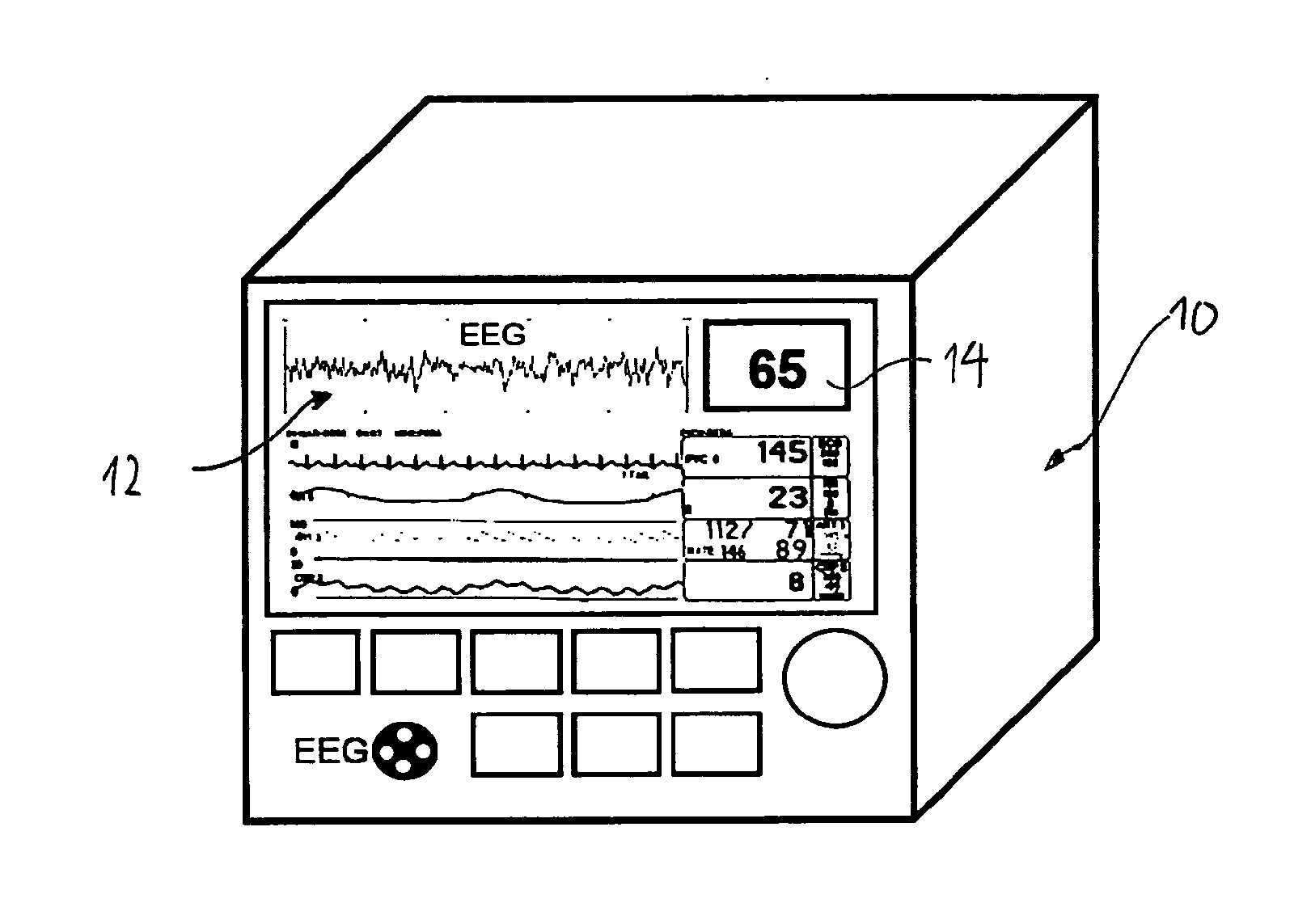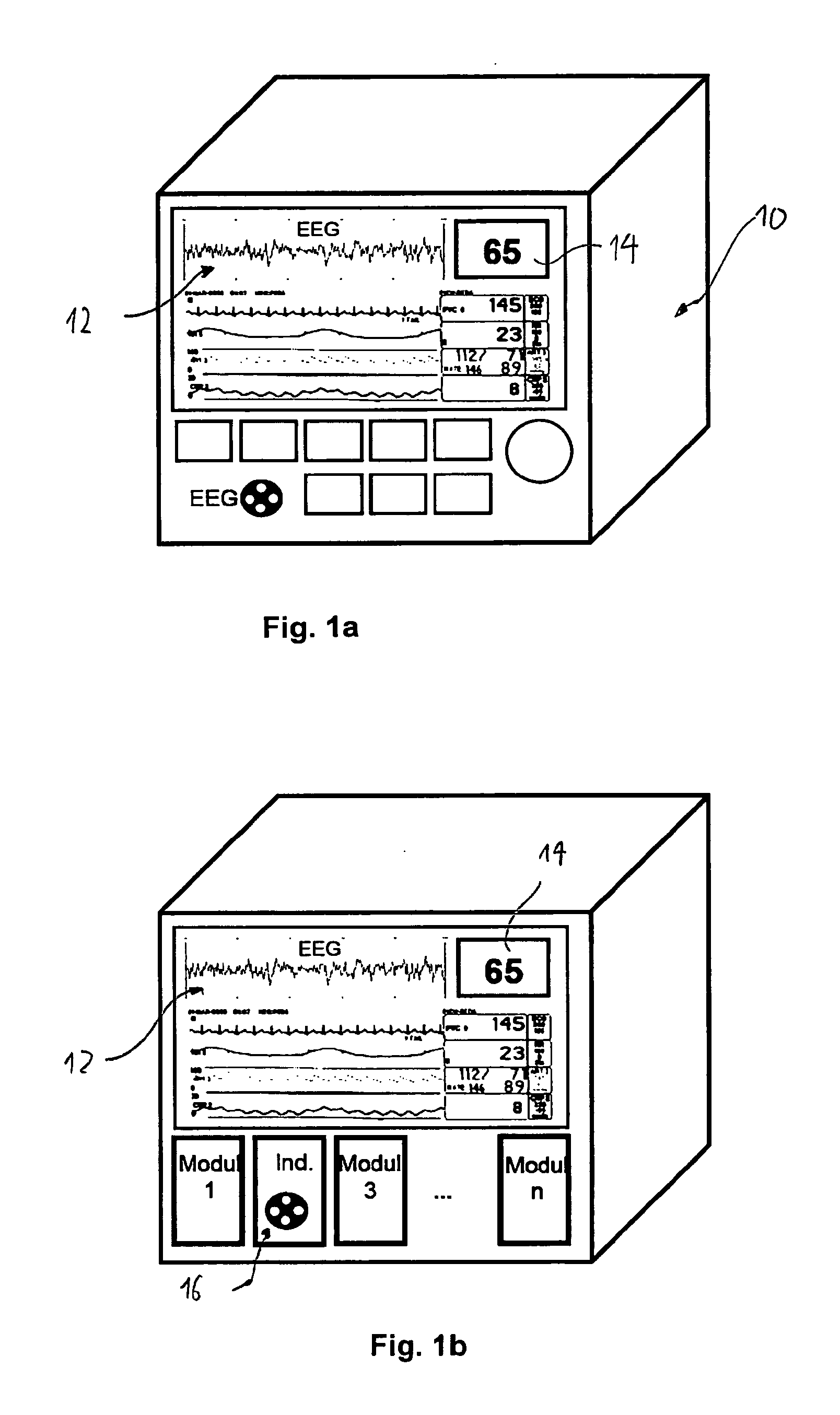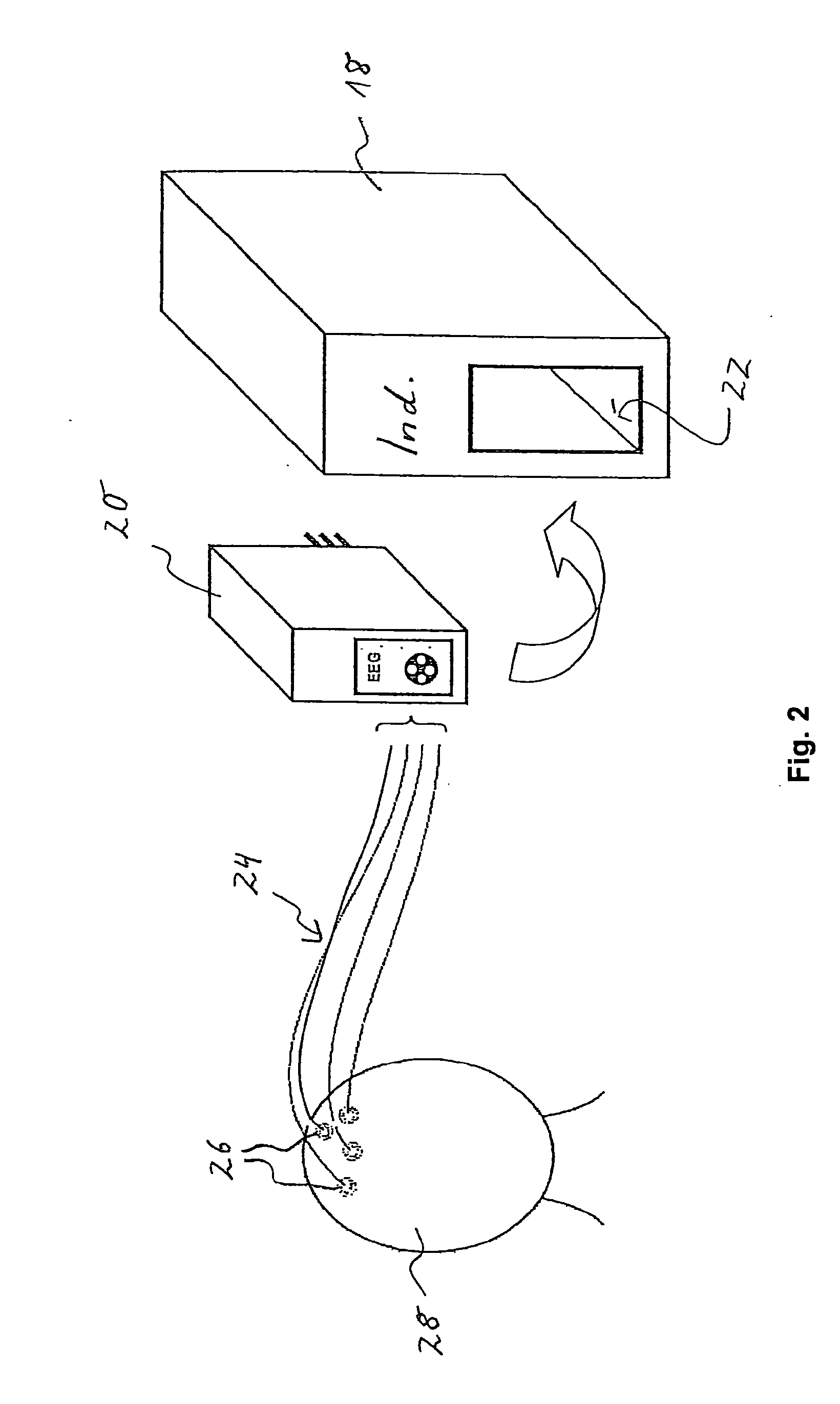Method and system for quantifying anaesthesia or a state of vigilance
a technology of anaesthesia and state of vigilance, applied in the field of methods and systems for quantifying anaesthesia or a state of vigilance, can solve the problems of affecting the quality of life of patients, sickness after the procedure or in a delayed convalescence, and the inability of surrogate parameters to provide a direct measure of the depth of anaesthesia
- Summary
- Abstract
- Description
- Claims
- Application Information
AI Technical Summary
Benefits of technology
Problems solved by technology
Method used
Image
Examples
first embodiment
[0056]FIG. 1a schematically shows a system for monitoring a patient and quantifying the depth of anaesthesia according to the present invention;
second embodiment
[0057]FIG. 1b schematically shows a system for monitoring a patient and quantifying the depth of anaesthesia according to the present invention;
[0058]FIG. 2 shows an indicator module with a plug-in EEG amplifier that can be employed in a system for monitoring a patient and quantifying the depth of anaesthesia according to the present invention;
[0059]FIG. 3 illustrates how an indicator for quantifying the depth of anaesthesia according to the present invention may be established based on a training set of collected patient data in a two-stage procedure, with sub-indicators A, B that are subsequently combined to an indicator;
[0060]FIG. 4 illustrates a method for quantifying the depth of anaesthesia while monitoring a patient in a two-stage procedure, wherein sub-indicators A, B are determined first and are then combined to compute an indicator value related to the hypnotic component of anaesthesia and / or the analgesic component of anaesthesia;
[0061]FIGS. 5a, 5b are charts that illustr...
PUM
 Login to View More
Login to View More Abstract
Description
Claims
Application Information
 Login to View More
Login to View More - R&D
- Intellectual Property
- Life Sciences
- Materials
- Tech Scout
- Unparalleled Data Quality
- Higher Quality Content
- 60% Fewer Hallucinations
Browse by: Latest US Patents, China's latest patents, Technical Efficacy Thesaurus, Application Domain, Technology Topic, Popular Technical Reports.
© 2025 PatSnap. All rights reserved.Legal|Privacy policy|Modern Slavery Act Transparency Statement|Sitemap|About US| Contact US: help@patsnap.com



